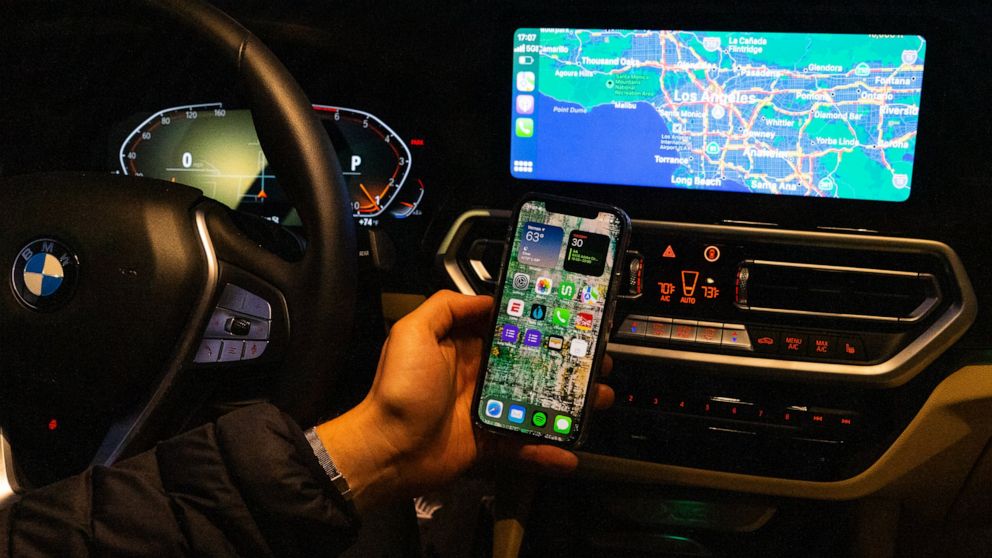One of the perks of buying a new vehicle is that it offers features that promise a safer and more convenient driving experience
Edmunds — One of the perks of buying a new vehicle is that it offers features that promise a safer and more convenient driving experience. Some technologies have trickled down from luxury to mainstream segments, while others have been introduced quickly across the market. But which features are essential? Edmunds’ experts break down five must-have features to look out for on your next car.
SURROUND-VIEW CAMERA
Parking is a tricky business, with the danger of curbing wheels, grazing poles, or bumping into parked vehicles. This is especially true of many modern vehicles that have sleek coupe-like rooflines but poor outward visibility. To reduce anxiety, surround-view camera systems project a bird’s-eye viewing angle onto the car’s infotainment system. From this perspective, you can maneuver your vehicle in tight spaces confidently.
More sophisticated versions of these systems offer several camera angles, including a front view and wheel close-ups. The most advanced iterations like those from Mercedes-Benz or Genesis can even generate a 360-degree 3D model of your vehicle. Towing-oriented surround-view camera systems are also available on some pickups such as the Ford F-150 and Toyota Tundra to make the process of hitching up a trailer much easier.
KEYLESS ENTRY AND IGNITION
When the dealer salesperson hands over the keys to your new car, don’t be surprised to receive a plastic or metal fob instead of a physical key. This device can be used to lock or unlock the vehicle. Modern key fobs also have the ability to open the trunk, remotely start the car, or even help you park the vehicle while you’re standing outside it. Once inside, drivers should be able to start the car with a button rather than inserting a key into the ignition.
Premium or well-optioned models also offer smart keyless entry. With the key fob nearby, you can enter a vehicle simply by pulling the door handle or lock it by pressing a sensor on the handle. No more fishing for the fob in your pockets, purse or bag every time you want to access your vehicle.
VARIED DEVICE CHARGING OPTIONS
New vehicles boast a range of device charging options including DC, AC, USB and wireless. DC, the oldest electrical current, is still used by some radar detectors and car accessories but requires a 12-volt adapter and cable to power most smartphones. AC plugs are the same as a household wall outlet and are commonly used to charge laptops or car camping gadgets.
USB ports come in two varieties, USB-A and USB-C, and operate at varying levels of output and charge rate. Both ports require a cable to charge devices or connect them to onboard infotainment systems. Wireless charging takes up more real estate but cuts the cable clutter. Just slip your compatible smartphone onto the charging pad and be on your way.
WIRELESS APPLE CARPLAY AND ANDROID AUTO
Smartphone integration in new vehicles has graduated from Bluetooth’s calling and media streaming to Apple CarPlay and Android Auto ’s immersive platforms. These solutions integrate a phone seamlessly into a vehicle’s infotainment system. Drivers and passengers can send and receive texts via voice command, listen to music and podcasts, follow turn-by-turn directions, or interact with a host of applications through the onboard display.
The most cutting-edge iterations of Apple CarPlay and Android Auto are wireless, which is handy if your vehicle also features wireless device charging. Wireless integration means reduced cord clutter and instant access to these systems the moment you start the vehicle. Though most automakers bundle both systems, some only offer Apple CarPlay, so do your research if you use an Android device.
USER-FRIENDLY CONTROLS
Contemporary automotive interior design is best characterized as a vendetta against clutter, so much so that we saw a phase of automakers eliminating useful buttons and knobs. Meanwhile, technologies and features are deepening. Fewer physical controls yet more settings can quickly lead to driver distraction and frustration, so a well-orchestrated user interface is critical. To their credit, a number of automakers listened to customer feedback and restored buttons for critical functions.
BMW’s iDrive system is an excellent example of operational redundancy. Users can touch the infotainment screen, control settings via a rotary dial and hot keys on the console, turn buttons on the steering wheel, or opt for voice commands. Audi employs haptic and auditory feedback on its infotainment touchscreens to give operators a cue that their input has been received — without visual confirmation. Most new vehicles offer a combination of some of or all of these tools, allowing drivers to use their preferred interface.
EDMUNDS SAYS:
The best new vehicle features increase convenience without compromising safety. We recommend picking a model that offers the above essentials — ideally as standard equipment — and bypasses expensive and redundant options like onboard navigation and rear entertainment systems.
—————
This story was provided to The Associated Press by the automotive website Edmunds.
Miles Branman is a Contributor at Edmunds. Twitter







More Stories
Pavé Bands vs. Plain Bands: London Trends
2 Hot Auto Stocks You Don’t Want to Miss out on in 2023
Protect Your Car With These Weatherproof Accessory Deals